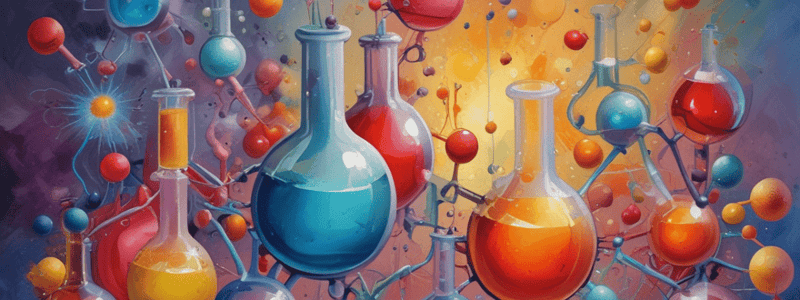Podcast
Questions and Answers
Какова функция языка в ротовой полости?
Какова функция языка в ротовой полости?
- Определение текстуры и температуры пищи
- Выделение слюны
- Разделение пищи на мелкие части
- Перемещение пережеванной пищи в глотку (correct)
Какие кости в голове могут двигаться?
Какие кости в голове могут двигаться?
- Только нижняя челюсть (correct)
- Зубы
- только верхняя челюсть
- верхняя и нижняя челюсть
Какое количество зубов у взрослого человека?
Какое количество зубов у взрослого человека?
- 20
- 32 (correct)
- 40
- 24
Какова функция губ в ротовой полости?
Какова функция губ в ротовой полости?
Какие железы secreting слюну в ротовой полости?
Какие железы secreting слюну в ротовой полости?
Что происходит с пищей в результате действия зубов?
Что происходит с пищей в результате действия зубов?
В какой форме язык манипулирует пережеванной пищей?
В какой форме язык манипулирует пережеванной пищей?
Что происходит с болусом, когда он проходит через фаринкс?
Что происходит с болусом, когда он проходит через фаринкс?
Какие волны двигают болус в желудок?
Какие волны двигают болус в желудок?
Какова роль слюны в процессе пищеварения?
Какова роль слюны в процессе пищеварения?
Что происходит с едой после того, как она была пережевана?
Что происходит с едой после того, как она была пережевана?
Какова функция рта в процессе пищеварения?
Какова функция рта в процессе пищеварения?
Flashcards are hidden until you start studying
Study Notes
Alkanes: Chemical Reactions
Alkanes are hydrocarbon compounds with general formula CnH2n+2, where n is the number of carbon atoms. They are the simplest organic compounds and are the major components of petroleum and natural gas. Alkanes undergo various chemical reactions, which are crucial in industrial processes and everyday life.
Combustion Reactions
Alkanes combine with oxygen to form carbon dioxide and water during combustion reactions. This process releases energy in the form of heat and light, making alkanes a valuable fuel source.
Addition Reactions
Alkanes undergo addition reactions, where two or more molecules combine to form a single molecule. One notable example is the addition of hydrogen to an alkane in the presence of a catalyst, forming an alkane with one additional hydrogen atom. This reaction is called hydrogenation.
Substitution Reactions
In substitution reactions, an atom or a group of atoms in an alkane is replaced by another atom or a group of atoms. This can occur through reactions with halogens (e.g., chlorine, bromine, and iodine) or through the addition of a hydroxyl group (–OH) to form alcohols.
Elimination Reactions
Elimination reactions involve the removal of atoms or molecules from an alkane, often resulting in the formation of a new C=C bond. This reaction type is significant in the formation of alkenes, which have one less hydrogen atom per carbon atom than alkanes.
Polymerization
Alkanes can also undergo polymerization reactions, where the molecules combine to form long chains of repeating units. This process forms polymers, which are essential in various industries and applications, such as plastics and resins.
Hydrolysis
Hydrolysis is the process of breaking a chemical compound into two or more simpler compounds using water. In the case of alkanes, hydrolysis may involve breaking the carbon-carbon bonds, leading to the formation of smaller alkanes and/or other organic compounds.
Oxidation and Reduction
Alkanes can undergo oxidation and reduction reactions, where they lose or gain electrons, respectively. These reactions can lead to the formation of various organic compounds, such as ketones, aldehydes, and carboxylic acids.
In conclusion, alkanes play a crucial role in various chemical reactions, which are essential in various industrial and everyday applications. Understanding these reactions can help in the development of new materials, energy sources, and other technological advancements.
Studying That Suits You
Use AI to generate personalized quizzes and flashcards to suit your learning preferences.




